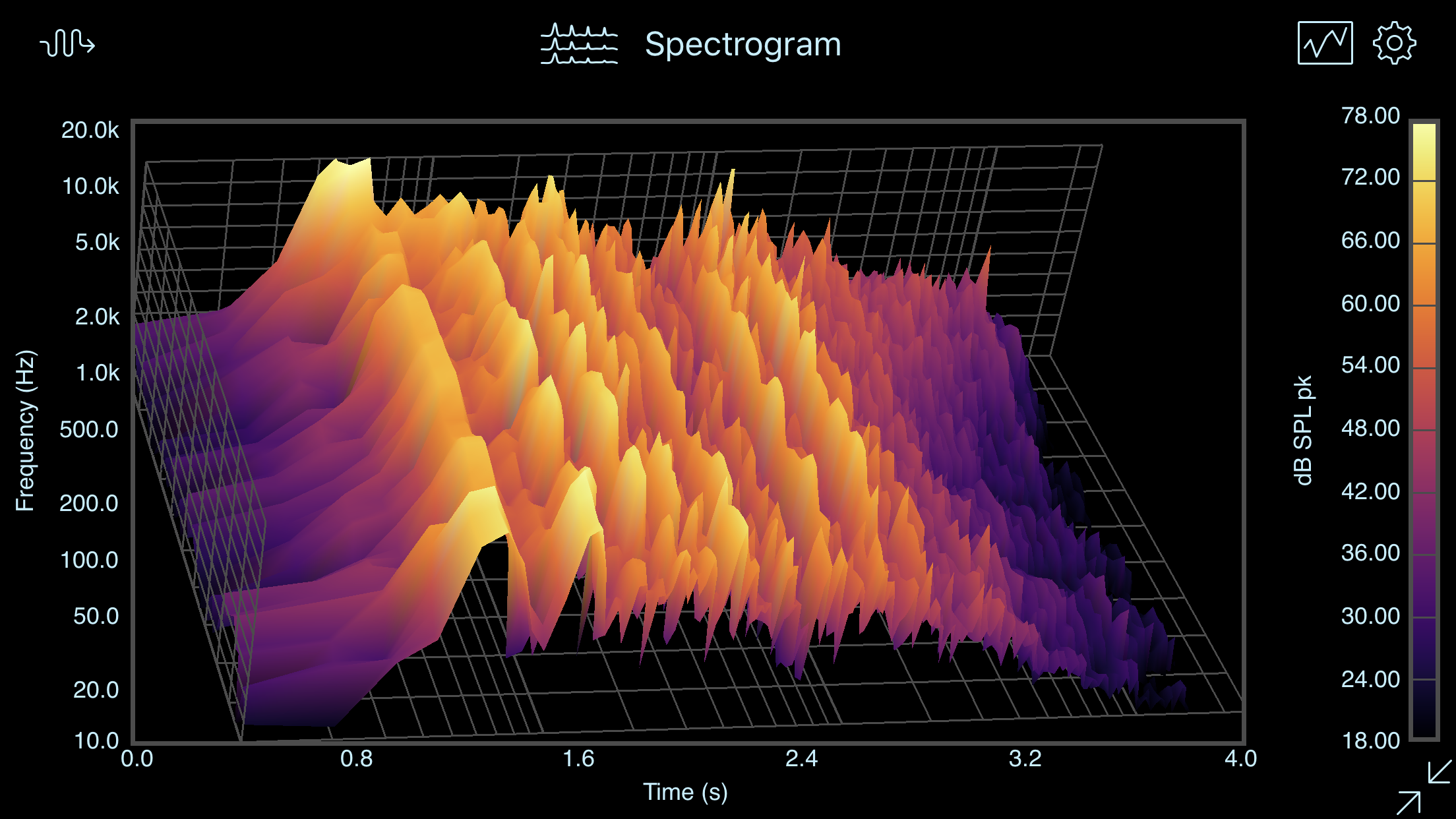

Selection can now be made from a list of available scales in the Display Options menu. Expanded list of vertical scale selections.In select tools, data import has moved from the options menu to a new menu of its own, which is found next to the input channel selection menu(s).Frequency response data, for FRC, can now be loaded from FFT or Dual FFT data files generated by SignalScope.Phase information is shown in a separate graph in the FR Compensation menu. Frequency response compensation (FRC) now supports phase correction when phase information is included in import frequency response data (FRD) files.When saving data, an Internal/External selection allows you too choose between saving the file in SignalScope’s sandboxed documents directory (Internal–this is the prior default behavior) or exporting it to a location of your choosing (External).As with the tab bar on iOS, an indication is given in the sidebar for any tools that are currently running.

The sidebar can be hidden to allow extra room for the selected tool. Tools in the sidebar are grouped into Basic, Advanced, and Pro collections, each of which can be collapsed or expanded to focus on only the desired tools.
SIGNALSCOPE GENERATOR
The Signal Generator tool now supports multiple output channel selection for the left and right signals.Input triggering behavior has been improved at smaller time scales. The Oscope now offers additional, smaller time scales.Input triggering in the Oscope and FFT tools now supports triggering all inputs from the same channel (selectable from any available input and output channels), or each channel self-triggering, as before.New basic tool: The Signal Generator tool has been moved from the Advanced to the Basic Tool Set.You can select the range of frequency bands to display in the Octave Analyzer tool’s main graph. The Octave Analyzer tool now supports octave bands with center frequencies from 1 Hz to 64 kHz (depending on the sample rate) and 1/3 octave bands from 0.8 Hz to 80 kHz (depending on the sample rate).New advanced tool: The File Player tool has been moved from the Pro to the Advanced Tool Set.Custom metadata entries can be enabled or disabled for inclusion in saved data files. Each custom metadata entry is remembered by the app until it is manually removed. New Pro feature: When saving an audio or data file, up to 10 custom metadata entries, each consisting of a name and value, can be specified to be included in the file.It even offers a data cursor for examining specific values within the plot.
SIGNALSCOPE MANUAL
The Polar Plot offers auto and manual scaling, dB scale, and selectable orientation, direction, grid lines, and angles.
SIGNALSCOPE PDF
This tool makes it easy to make a beautiful graph of polar data, which can be saved to a high resolution PDF file. It can also indicate the sign (positive or negative direction, relative to the orientation of the probe) of the intensity and velocity data in individual frequency bands as well as for overall levels. It offers phase compensation for each 2-mic (p-p) probe axis and means of measuring the pressure-residual-intensity index. The Sound Intensity tool was designed according to the requirements specified in ANSI standard S1.9-1996, Instruments for the Measurement of Sound Intensity. Measure up to 3 axes of acoustic intensity, acoustic particle velocity, and acoustic pressure with 2-microphone sound intensity probes in whole or 1/3-octave bands, or in narrowband FFT-based spectra.
SIGNALSCOPE UPGRADE
SignalScope X receives a major upgrade with version 12.0, including new tools and features.


 0 kommentar(er)
0 kommentar(er)
